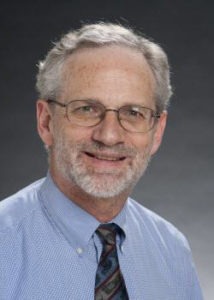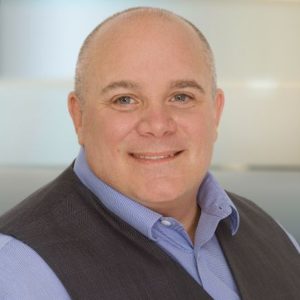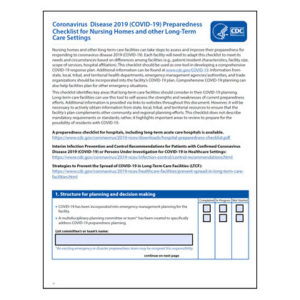Holistic Wellness
A recent study in the Journal of the American Medical Association supports research that indicates adults over the age of 60 who had high levels of fitness are living longer.1 At Virginia Mennonite Retirement Community (VMRC), where most residents are in their late 70s, the importance and benefits of wellness and fitness are part of the corporate mission: to provide resources to help elders age well in a place they call home. From the inception of VMRC’s Wellness Center in the late 1990s, the vision for the facility was to complement VMRC’s mission of providing a full continuum of the highest quality health and wellness care to elders through a broad array of programming in the six areas of wellness: spiritual, physical, emotional, social, intellectual and vocational.
Program goals for the Wellness Center reflected that mission as well:
to provide a quality facility and programming to adults age 50 and older
to operate a state-of-the-art wellness center dedicated to improving the quality of life and well-being of the 50+ population
to provide a broad scope of exercise and fitness activities including strength training, aerobic, and aquatic programs
to provide a variety of therapeutic programs, including physical and massage therapies
to serve as a central facility for coordinating community-wide seminars, lectures, health fairs, and other wellness programs that educate and inform
to promote and integrate wellness activities provided by other VMRC departments such as activities, pastoral care, nursing, restorative, social work, and dining services
to generate funding through memberships and therapeutic/rehabilitative services
The development plan for the Wellness Center emphasized that VMRC residents would be encouraged to continually develop, improve, and balance all six dimensions of wellness through a broad array of programming, both at the Wellness Center and throughout campus life. In addition to housing a high-caliber exercise facility, pool, and serving as the “hub” for wellness and fitness at VMRC, the Wellness Center would present community-wide wellness seminars to promote wellness and foster community goodwill and awareness of VMRC. In 2000, the Wellness Center opened as a fee-for-service center offering residents of the continuing care retirement community an opportunity to use state-of-the-art equipment in a professionally designed fitness environment. With the opening of the Wellness Center, VMRC administration had the hope that every resident would desire a personal life enrichment plan. However, staff acknowledged over time that not all residents possessed the interest or motivation to participate in wellness programs.
After considerable discussion of the voluntary choice of an individual’s fitness and wellness goals and VMRC’s philosophy of holistic wellness, the administration changed its fee structures at its Wellness Center to include Wellness Center membership with all new resident fees. Existing residents at that time had the opportunity to have their contracts rewritten to include Wellness Center fees. A new philosophy of wellness programming was created and delivered that enabled greater collaboration among fitness and rehabilitation staff to focus programs on residents’ needs. The new wellness program delivery model encouraged more residents to take advantage of the services for which they were paying. In 2002, the Division of Life Enrichment and Spiritual Care became the integrated organizational division at VMRC to oversee the Wellness Center, Arts and Education, Pastoral Care, Volunteer Services, and Supportive Living Activities. Prior to the establishment of the Wellness Center, wellness activities and programs were offered to residents under various departments within VMRC’s organizational structure. A unified vision for promoting wellness to residents existed, but the structure within which to implement wellness programs and education was missing. By creating the Division of Life Enrichment and Spiritual Care at VMRC, the administration remained faithful to its original vision and philosophy of providing wellness and holistic health to elders.
The expansion of Wellness Center membership to all VMRC residents created programmatic opportunities that reflect the full-range of wellness needs of the 750-resident population. By recognizing and providing for this spectrum of wellness needs, the Wellness Center at VMRC became one of only two long-term care providers in the Commonwealth of Virginia recognized by the International Council on Active Aging to offer wellness programming that covers the comprehensive range of fitness levels and abilities of elders:
designed to help residents regain strength and balance
designed to help residents improve overall health and well-being
designed to help residents maintain their current activity levels
designed for residents who train or exercise daily
Elders moving into VMRC have a strong interest in the Wellness Center. Since 2003, 87% of new resident move-ins to VMRC residential cottages and apartments are active members of the Wellness Center. The heart of the Wellness Center is its workout room, complete with Keiser strength equipment, treadmills, NuSteps, and BioSteps. Other amenities within the Center include a 20-meter heated indoor pool and spa, aqua aerobics, yoga fusion, balance classes, and line dancing. Fitness and strength training programs follow guidelines established by the American College of Sports Medicine and all Wellness Center associates, instructors, and lifeguards are certified by one or more of the following organizations: American Council of Exercise (ACE), Aquatic Exercise Association (AEA), Arthritis Foundation, and/or the American College of Sports Medicine (ACSM). Wellness Center associates perform senior fitness tests semiannually on active Wellness Center members to show areas of improvement and need. Functional activities are identified on the fitness tests and enable Wellness Center associates to develop or adapt an exercise program targeted to a resident’s needs. Program content is directed toward functional activities that reflects the continuum of needs at a continuing care retirement community.
Of the residents living in the Oak Lea Nursing Care at VMRC, 65% are active participants in Wellness Center activities, and nearly half of the residents in Crestwood Assisted Living at VMRC participate in wellness programs. Those numbers represent 135 residents from Crestwood Assisted Living and Oak Lea Nursing Care who regularly participate in wellness programs. Those statistics mirror or are higher than usage statistics of residents in VMRC’s four independent living communities.
To encourage residents of Crestwood and Oak Lea to participate in wellness programming, Wellness Center associates visit residents weekly for functional exercise activities. Props such as scarves, wooden sticks, and rubber balls are used to encourage movement and repetition. Similar modalities are used with dementia residents in neighborhoods in Crestwood Assisted Living to improve their mobility and dexterity. Care plan team members seek and recommend to Wellness Center associates residents who have expressed interest in wellness activities. Transportation for residents with limited physical mobility is also arranged to the Wellness Center. The time and frequency of classes also take into consideration the needs of residents in Crestwood Assisted Living and Oak Lea Nursing Care.
The environment and equipment offered by VMRC exemplifies its commitment to wellness and fitness by reflecting current trends. In January, VMRC’s Wellness Center introduced the Wii gaming technology console to residents. The Wii enables residents, regardless of mobility, the opportunity to participate in sports without injury, equipment limitations, or travel concerns. Health education classes, special guest speakers, and social activities are sponsored monthly by the Wellness Center reflecting various health-related themes. To keep abreast of Wellness Center members’ interests and feedback, annual surveys are conducted by Wellness Center associates to evaluate customer service, facilities and equipment usage, and classes. Survey responses provide input into the program and development process of wellness as it continues to evolve at VMRC.
For more information, call (540) 438-4205 or visit https://www.vmrc.org. To send your comments to the author and editors, please e-mail pearson0408@iadvanceseniorcare.com.
Reference
- Xuemei S, LaMonte MJ, Laditka JN, et al. Cardiorespiratory fitness and adiposity as mortality predictors in older adults. Journal of the American Medical Association 2007; 21:2507–16.
I Advance Senior Care is the industry-leading source for practical, in-depth, business-building, and resident care information for owners, executives, administrators, and directors of nursing at assisted living communities, skilled nursing facilities, post-acute facilities, and continuing care retirement communities. The I Advance Senior Care editorial team and industry experts provide market analysis, strategic direction, policy commentary, clinical best-practices, business management, and technology breakthroughs.
I Advance Senior Care is part of the Institute for the Advancement of Senior Care and published by Plain-English Health Care.
Related Articles
Topics: Articles , Clinical











